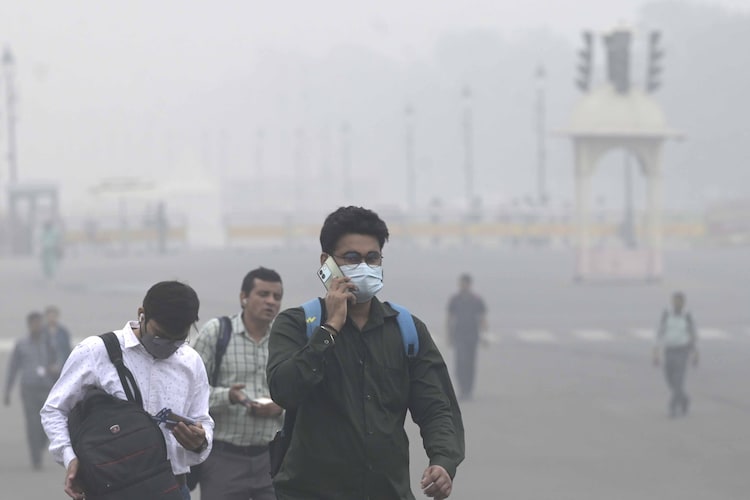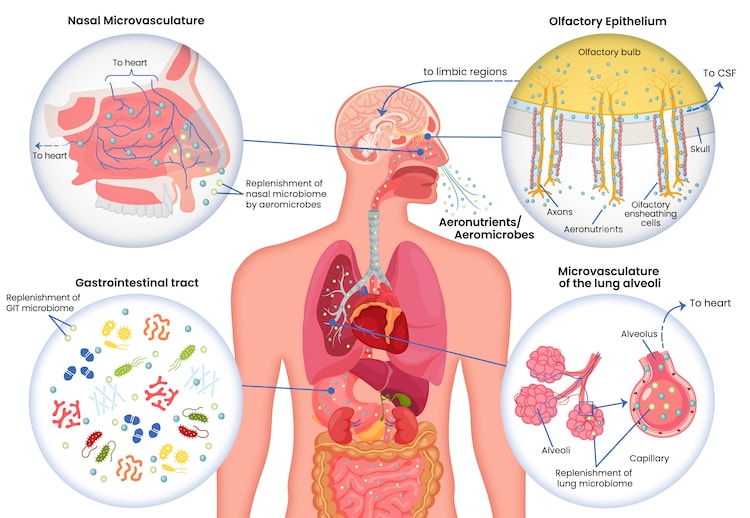We breathe 9,000 liters of air a day. This is not enough in Delhi
As Delhi grapples with its annual smog crisis, a new study suggests that polluted air may be depriving residents of vital ‘aeronutrients’ normally absorbed through breathing.

As October and November arrive, Delhi finds itself wrapped in a thick blanket of smog. A combination of stubble burning in neighboring states, emissions from local vehicles and a drop in wind speed have clogged the national capital.
This annual crisis disrupts daily life, forcing residents to stay indoors and prompt health advisories.
While many studies have warned about the worsening health effects of air pollution that causes an increase in respiratory diseases and heart problems, researchers are now warning of an underlying effect of this heavy smog – on vital nutrients that we normally take for granted. Absorb during breathing.
Fresh air as a source of nutrients
We usually associate nutrition with what we eat, but growing evidence suggests that the air we breathe also plays a role.
A recent research article in Advances in Nutrition introduced the concept of “aeronutrients,” nutrients that are absorbed through the lungs and nasal passages. These include essential elements like iodine, zinc, manganese and even some vitamins.
Breathing is a continuous process, with an average person inhaling approximately 9,000 liters of air per day and approximately 438 million liters of air in their lifetime. This constant exposure allows our bodies to absorb minute amounts of beneficial compounds present in the air.

The author of the research, Stephen R. Robinson, Professor in Psychology, Research, RMIT University, and Flavia Fayette-Moore, Adjunct Lecturer, School of Environmental and Life Sciences, Newcastle University, wrote in The Conversation that studies of coastal areas show that seaweed-rich areas Children living near the U.S., where iodine levels in the air are higher, show less iodine deficiency than in inland areas.
This highlights how breathing nutrient-rich air can supplement dietary intake.
How do aeronutrients work?
While the digestive system breaks down nutrients with the enzymes and acids present, the respiratory system absorbs larger molecules directly into the bloodstream.
Studies show that this rapid absorption explains why certain medications or even inhaled substances like harmful pollutants can affect the body so quickly.
Similarly, beneficial compounds present in the air, such as aerosolized vitamins or minerals, can also enter our systems efficiently.

The respiratory tract contains hair-like structures, called cilia, which act as gateways for these nutrients.
A 70-year-old study showed that aerosolized vitamin B12 is an effective treatment for vitamin B12 deficiency. This finding is particularly beneficial for individuals at high risk of deficiency, including vegetarians, older adults, people with diabetes, and people who consume excessive alcohol.
Similarly, manganese and zinc absorbed through the olfactory system support essential body functions, although excessive exposure to these elements can have adverse effects.
Delhi’s air pollution: a nutritional disaster
In cities like Delhi, where pollution levels often reach dangerous levels, the composition of the air inhaled changes dramatically.
Instead of air nutrients, the air is saturated with harmful particles, toxins and heavy metals. These pollutants not only displace beneficial compounds but can also harm the respiratory system, reducing its ability to absorb any nutrients present.
For example, high levels of airborne manganese, which is common in industrial pollution, can cause toxic accumulation in the brain, as seen in occupational hazards such as welding.

In Delhi’s polluted air, beneficial aeronutrients such as iodine or vitamin C are likely to outweigh harmful substances, depriving residents of supplemental nutrition they might otherwise get from clean air.
A recent study in The Lancet showed that iodine deficiency remains a significant public health issue in India. While fortified salt has reduced cases, the potential role of inhaled iodine in maintaining levels is largely unknown in the country.
In fact, lack of clean air leads to deficiencies of other nutrients like vitamin D, which requires sunlight to synthesize but becomes harder to obtain in smog-filled environments.
call to action
Chronic exposure to polluted air can have widespread impacts on public health.
Researchers Robinson and Fayette-Moore highlighted the concept of aeronutrients, which now opens a new frontier in understanding how our environment affects health.
Although more research is needed to identify and quantify these nutrients, the implications are clear: clean air is not just a luxury but a nutritional necessity.
As Delhi fights against pollution, solutions should span from reducing harmful emissions to preserving the healthy qualities of the air.
Experts say initiatives like increasing green spaces, promoting urban forests and reducing vehicular traffic are steps in the right direction.







